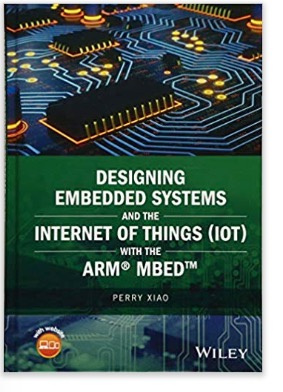Blog
Recent Posts
Designing Embedded Systems For Internet of Things (IoT) Applications
Posted by on
Designing Embedded Systems and the Internet of Things (IoT) with the ARM mbed offers a convenient guide to the development of ARM mbed and includes a variety of topics on the subject from the basic to the advanced. ARM mbed is a platform and operating system based on the 32-bit ARM Cortex-M microcontroller. This vital resource focusses on the ARM mbed NXP LPC1768 and FRDM-K64F evaluation boards.
The NXP LPC1768 processor provides powerful features such as a fast microcontroller, various digital and analog I/Os, various serial communication interfaces and an easy-to-use Web-based compiler. It is one of the most popular kits that are used to study and create embedded projects. FRDM-K64F is a relatively new system, and it is mostly compatible with NXP LPC1768 but owns even more powerful features.
This convenient text is an excellent guide that comes in four sections, such as getting started with the ARM mbed, covering the basics, advanced topics, and case studies. This getting started guide:
- Offers a clear introduction to the topic
- Contains a wealth of original and illustrative case studies
- Includes a practical guide to the development of projects with the ARM mbed platform
- Presents timely coverage of how to develop IoT applications
Designing Embedded Systems and the Internet of Things (IoT) with the ARM mbed offers students and R&D engineers a resource for understanding the ARM mbed NXP LPC1768 evaluation board.
Even the most cautious estimates show that Internet of Things (IoT) applications are a huge market where innovation is necessary and where programmers are in high demand. The challenge is that programming IoT embedded systems cross many knowledge domains.
This book provides the fundamentals of embedded programming to programmers and enables them to reach their full potential. Embedded Software for the IoT helps the reader understand the details of the technologies behind the devices used for the Internet of Things.
It presents an overview of IoT, parameters of designing an embedded system, and good practice concerning code, version control and defect-tracking needed to build and maintain a connected embedded system. After presenting a discussion on the history of the internet and the world wide web, the book introduces modern CPUs and operating systems.
The book then delves into an in-depth view of core IoT domains including:
- Wired and wireless networking
- Digital filters
- Security in embedded and networked systems
- Statistical process control for Industry 4.0
 Loading... Please wait...
Loading... Please wait...


